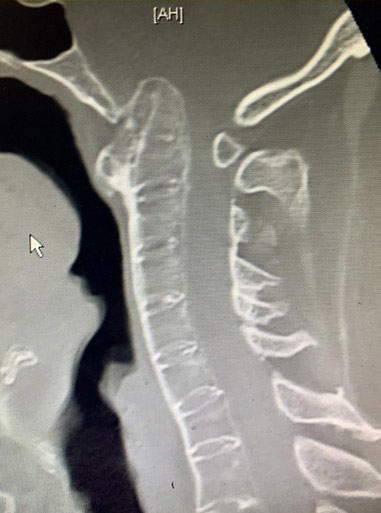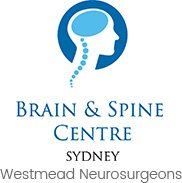Rheumatoid Spine
Rheumatoid arthritis (RA) is an inflammatory condition that can affect multiple parts of the body, including the spine, most commonly at the very top of the neck or cervical spine. There are seven (7) bones (or vertebrae) in the cervical spine. RA can cause the first cervical vertebra (C1) to dislocate on the second (C2). This is termed Atlanto-axial Instability (or AAI for short). In addition, the tip of C2 (also known as the odontoid process, or dens) can ‘telescope’ up through the foramen magnum, which is the hole down which the bottom of the brain (or brainstem) transitions into the spinal cord. This condition is called Basilar Invagination. RA can also cause a large inflammatory mass to form around the dens, termed Pannus. Furthermore, RA can lead to osteoporosis, while medications used to treat RA can interfere with wound and bone healing, which are important things to consider when deciding on surgery.
Symptoms
- Neck pain or stiffness
- Occipital neuralgia, or pain at the back of the head. This is because the C2 nerve can become trapped.
- Clumsy hands, or problems with dexterity and fine motor movements, due to spinal cord compression
- Balance problems, or difficulties with walking, due to spinal cord compression
- Bladder and bowel issues, due to spinal cord compression
- Problems with voice or swallowing, due to brainstem compression
Diagnosis
- X-rays, including ones of you bending your neck forwards and backwards to assess amount of dislocation between the atlas (C1) and axis (C2)
- CT
- MRI

Figure. CT showing Basilar Invagination, where the tip of C2 ‘telescopes’ through the foramen magnum.
Treatment
Fortunately, advances in medications used to treat RA have significantly reduced the incidence of conditions like Pannus. In addition, non-surgical measures like anti-inflammatories and cortisone injections may help alleviate pain. However, if symptoms become intolerable despite these measures, or if there is evidence of spinal cord or brainstem compression, surgery may be indicated. Goals of surgery are two-fold, firstly to relieve pressure off the spinal cord or brainstem, and secondly to stabilise and fuse the spine. Depending on the individual case, surgery may be done through the front, back or both.
Procedures through the front include
- Trans-oral odontoidectomy, i.e. removing the odontoid process through the mouth
- Endoscopic endonasal odontoidectomy, i.e. through the nose, often done with a high-definition endoscope
Procedures through the back include
- C1-2 fusion
- Occipito-cervical fusion, i.e. fusing the bottom of the skull to the neck




